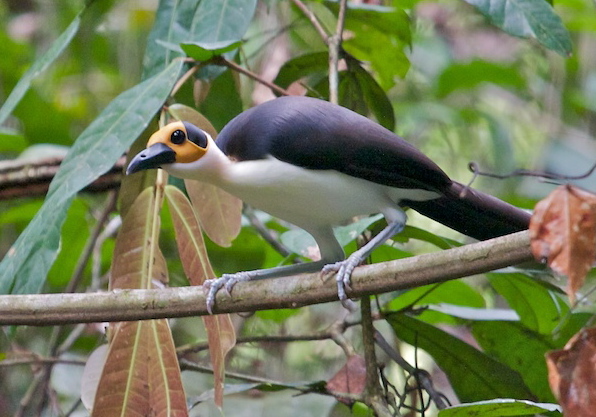Facts About White-necked rockfowl
The white-necked rockfowl, also known as the white-necked picathartes, is a captivating bird native to the rocky, forested highlands of West Africa, ranging from Guinea to Ghana. This medium-sized bird commands attention with its striking appearance: it boasts greyish-black upperparts, white underparts, and a nearly bald head adorned with vibrant yellow skin and prominent black patches behind its eyes.
White-necked rockfowls are insectivores, frequently observed trailing army ant swarms to catch their prey. They also occasionally feed small frogs to their young. These birds are monogamous and nest in colonies, constructing mud cup nests on rock surfaces or within caves. They typically lay two eggs twice a year, and their nestlings mature in about a month.
In terms of classification, the white-necked rockfowl has undergone various taxonomic revisions over the years. Today, it is recognized as part of the unique family Picathartidae, along with its close relative, the grey-necked rockfowl. Unfortunately, the white-necked rockfowl is listed as Vulnerable due to habitat loss and declining population numbers. Conservation efforts are underway to protect this species, which holds cultural significance for indigenous peoples in Sierra Leone, who regard it as a guardian of ancestral spirits. Additionally, the bird has emerged as a symbol for ecotourism and conservation in the region.
These birds are noted for their intriguing behaviors, including distinct vocalizations and elaborate territorial and breeding displays. They build specialized mud nests in caves or on cliffs, but face significant threats from habitat destruction, hunting, and capture for captivity. To combat these threats, conservation initiatives are focused on protecting habitats, raising public awareness, and implementing international action plans.
The white-necked rockfowl's distinctive characteristics and conservation needs have made it a flagship species, underscoring the importance of habitat conservation efforts throughout Africa.

 Sierra Leone
Sierra Leone